Tatabi Studio designs marbled packaging for Diz-Diz microwave popcorn
Spanish studio Tatabi looked to ancient Greece to find influences for the branding and packaging design of a gourmet popcorn company (+ slideshow).
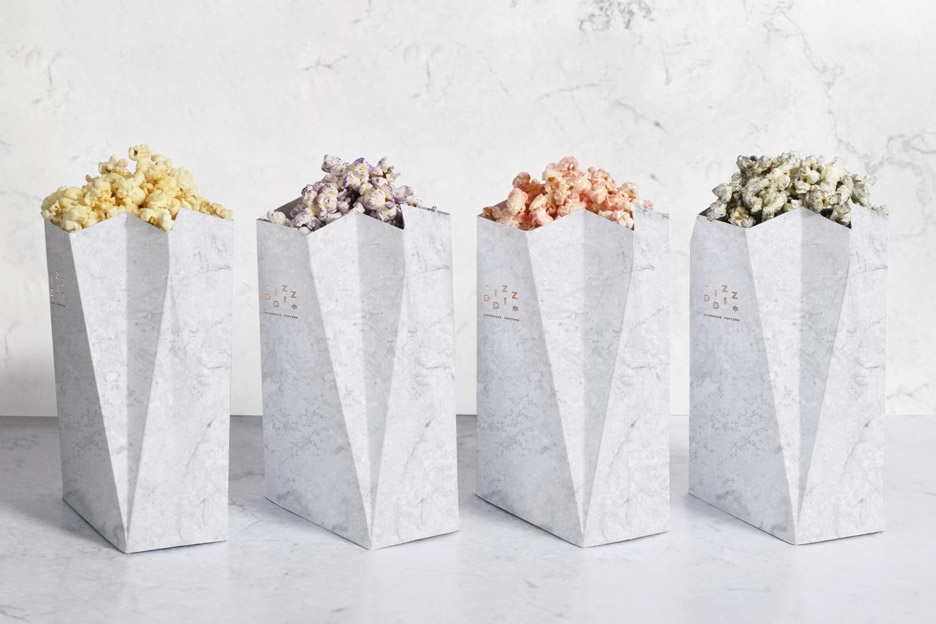
Tatabi apparently used Mount Olympus, the mythological home of the ancient Greek gods, as a reference for the colours, textures and aesthetic of the packaging.
"If the Gods eat popcorn, they would choose Diz-Diz," said the studio, which is based in Valencia and has worked on several food-branding projects.
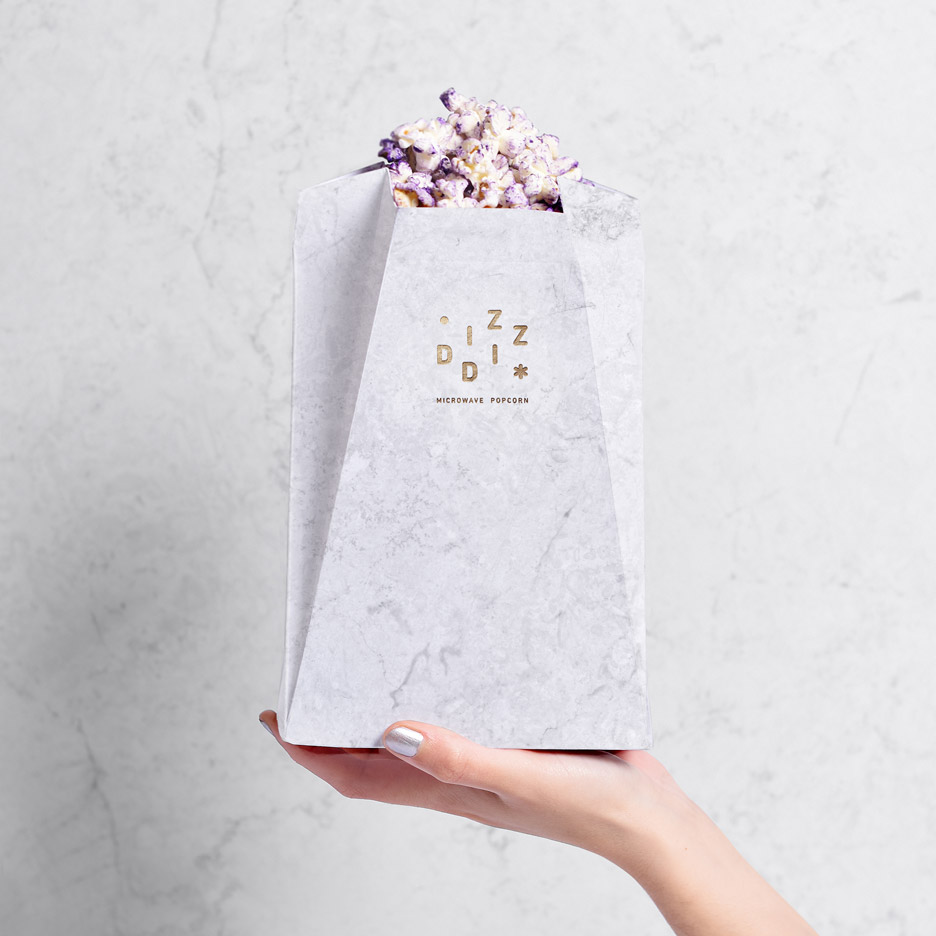
The brief called for Tatabi to design a brand that would be both "luxurious and fun" and "colourful and elegant" at the same time.
The bags of popcorn are covered in coloured foil, which has been designed to match the parmesan, curry, vanilla and cinnamon flavour range.
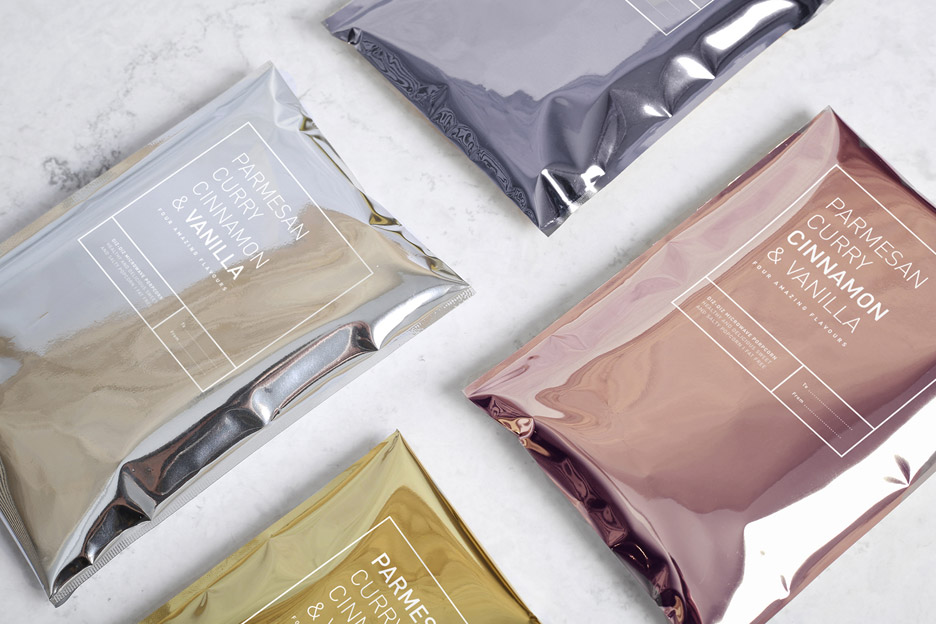
The material is repeated in the popcorn's branding, which includes a logo made from stacked sans-serif letters placed alongside an asterisk motif, and embossed in foil on the packaging.
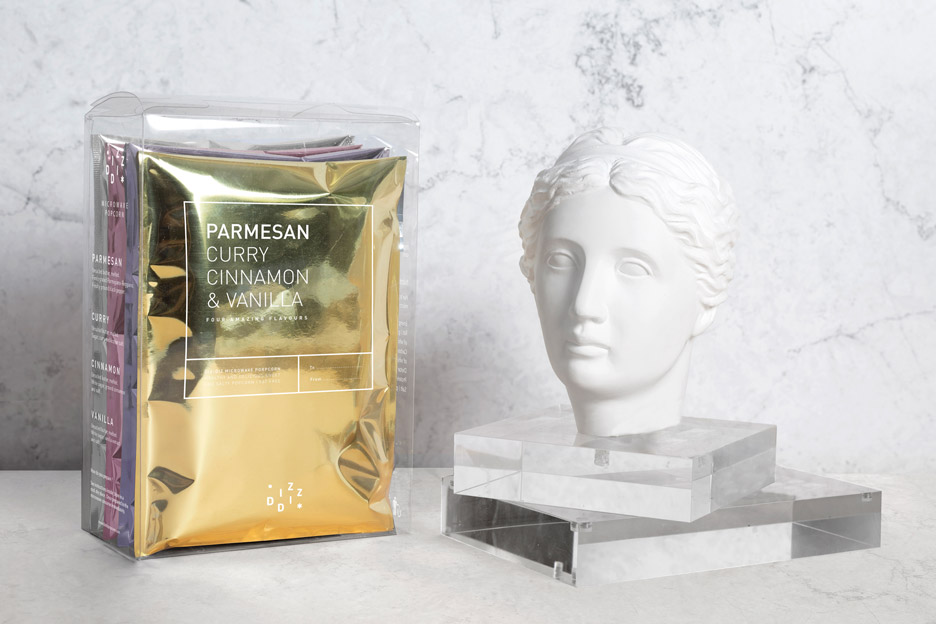
"To enhance the luxurious and gourmet Diz-Diz aspect, we decided to combine the white marble colours and metallic materials," said the studio.
Bags are housed together in a set of all four flavours in a flexible plastic box, which is held in a marble-effect box with a sliding cover. The pattern is repeated in a paper container included with each packet – similar to that used for cinema popcorn – which can be used to hold the snack once microwaved.
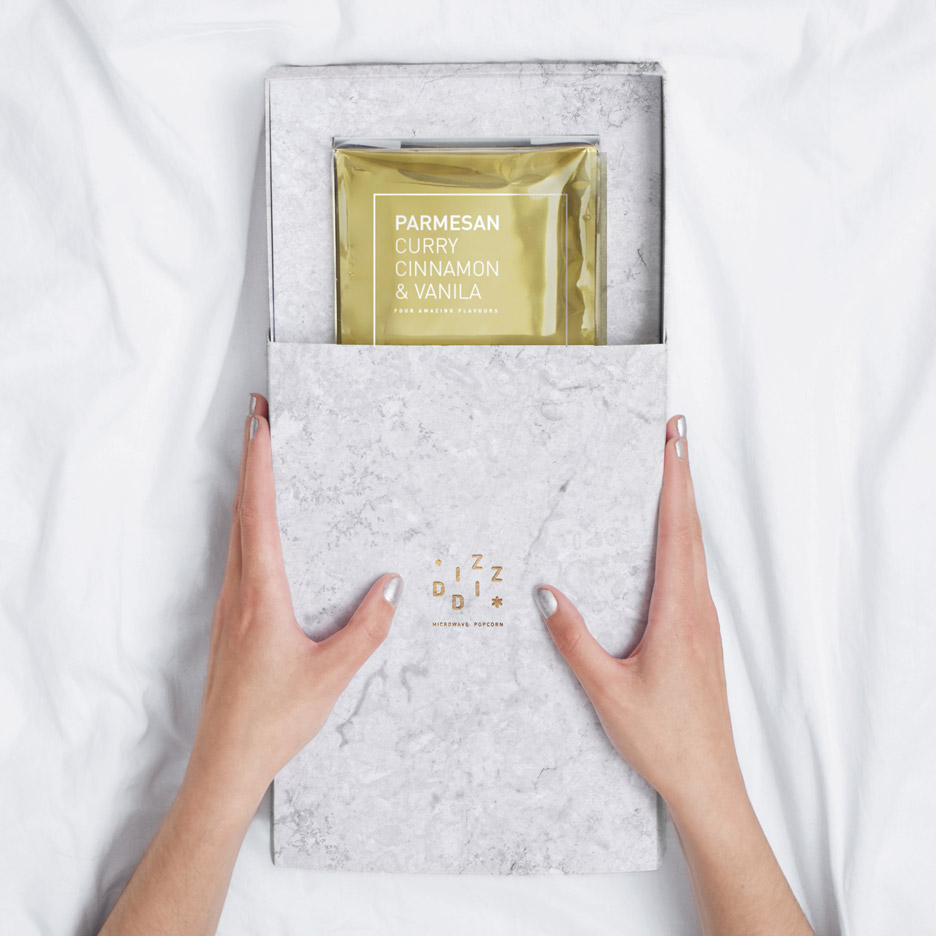
Popcorn is also the subject of Jolene Carlier's project – a machine that spurts the puffed kernels from the end of a glass tube into a bright yellow bowl when ready to eat.
Other food-focused packaging designs include Pentagram's recent collaboration with rapper Snoop Dogg on his range of edible cannabis products, which featured a jewel-like marijuana leaf logo and spot-varnished paisley pattern.
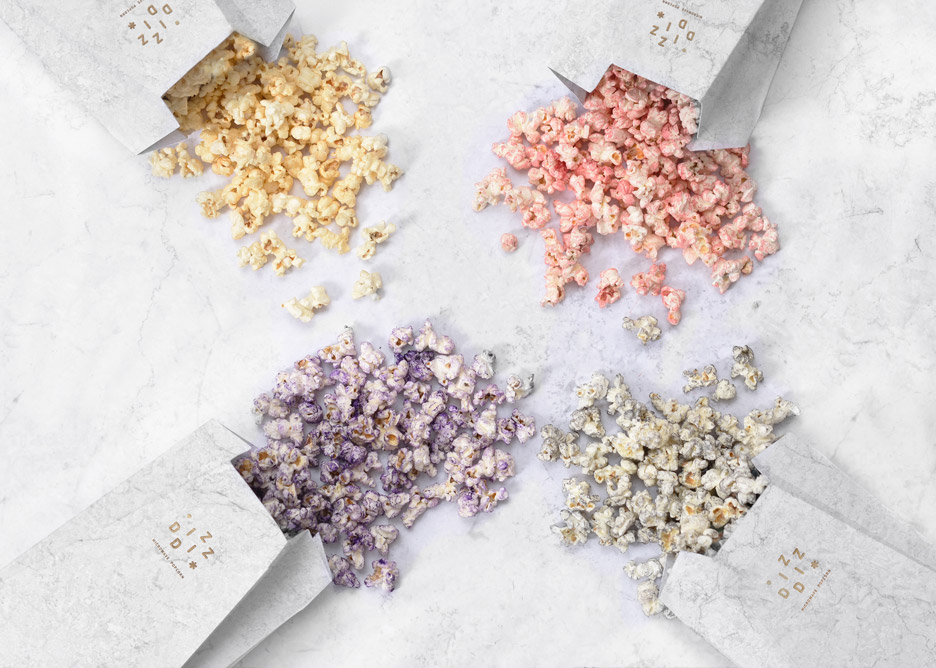
British studio Horse based its packaging for sap drink Tåpped on the striped trunks of the birch tree, where the drink is harvested from. Japanese designer Yuta Takashi took a more minimal approach for his chocolate-bar branding, which used just a simple serif font on a plain white background to represent the bar's focus on pure ingredients.
Like Dezeen on Facebook for the latest architecture, interior and design news »